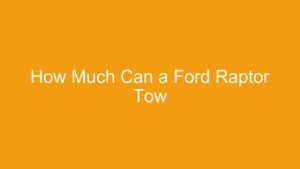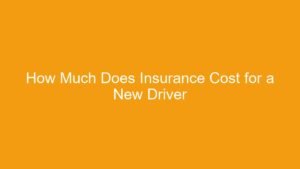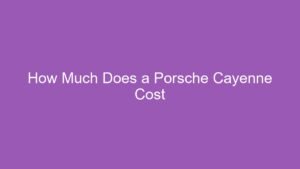
Contents
- Unlocking the Mystery: How Much Should Gap Insurance Cost? Your Friendly Guide to Smart Savings
- What Exactly Is Gap Insurance? A Quick Refresh
- Factors That Influence Your Gap Insurance Cost
- Typical Cost Range: What to Expect
- Step-by-Step: How to Find the Best Price for Gap Insurance
- Smart Tips for Saving Money on Gap Insurance
- Common Mistakes to Avoid
- When Can You Cancel Gap Insurance?
- Conclusion: Be Smart, Shop Smart
- FAQ
Unlocking the Mystery: How Much Should Gap Insurance Cost? Your Friendly Guide to Smart Savings
Buying a new car is exciting, but let’s be honest, the financial side can sometimes feel like a puzzle. One piece of that puzzle you might encounter is Gap Insurance. It’s a crucial safety net for many, but the big question always looms: How much should gap insurance cost?
Don’t worry, you’re in the right place! We’re here to demystify gap insurance pricing, explain what influences it, and empower you with the knowledge to find the best deal without feeling overwhelmed. Our goal is to help you make an informed decision with confidence and ease.
What Exactly Is Gap Insurance? A Quick Refresh
Before we dive into costs, let’s quickly define what we’re talking about. GAP stands for Guaranteed Asset Protection.
🛒 Recommended Product
Imagine this: You drive your brand-new car off the lot. Unfortunately, a few months later, it’s involved in an accident and declared a total loss. Your standard auto insurance policy will typically pay out the actual cash value (ACV) of the car at the time of the loss.
Here’s the problem: Cars depreciate rapidly. Often, the ACV your insurer pays is less than what you still owe on your loan or lease, especially early on. This difference is called the “gap.”
Gap insurance steps in to cover that difference. It pays the remaining balance on your loan or lease after your primary insurer has paid its portion, preventing you from being stuck owing money on a car you no longer have.
When is it most useful? If you:
* Made a small down payment (or no down payment).
* Have a long loan term (e.g., 60 months or more).
* Leased your vehicle.
* Rolled negative equity from a previous car loan into your new one.
* Bought a car that depreciates quickly.
Factors That Influence Your Gap Insurance Cost
There isn’t a one-size-fits-all answer to “how much should gap insurance cost,” because several key factors come into play. Understanding these will help you anticipate your potential premium.
1. Your Vehicle’s Value and Depreciation Rate
- Higher-value cars often mean higher potential gaps, which can lead to slightly higher gap insurance premiums.
- Vehicles known to depreciate quickly might also see slightly higher costs, as the risk of a significant gap is greater.
2. Your Loan or Lease Amount
- This is a major factor. The larger your loan or lease, the larger the potential “gap” your policy might need to cover. A bigger gap typically means a higher premium.
- Conversely, if you made a substantial down payment, your loan amount is smaller, and your gap insurance might be less expensive (or even unnecessary, depending on the equity).
3. Your Loan Term
- Longer loan terms (e.g., 72 or 84 months) mean you build equity slower. This increases the period during which a significant gap could exist, potentially leading to a slightly higher gap insurance cost.
- Shorter terms usually mean faster equity build-up, reducing the risk period and potentially the premium.
4. Your Deductible
- Some gap insurance policies might take into account the deductible on your primary auto insurance policy, especially if they are bundled. If your gap policy covers your primary deductible (some do!), that’s an added benefit that could be factored into the price.
5. Where You Purchase It (This is HUGE!)
- This is perhaps the single biggest determinant of cost.
- Car Dealerships: Often the most expensive option. They frequently mark up the price significantly as part of the financing process. You might pay a lump sum that gets rolled into your loan, meaning you pay interest on it.
- Your Primary Auto Insurer: Often the most affordable. Many major insurance companies offer gap coverage as an add-on to your existing policy for a relatively low monthly or annual premium.
- Specialty Gap Insurance Providers: These companies focus solely on gap coverage and can offer competitive rates, often as a standalone policy.
- Banks/Credit Unions: If you financed your car through a bank or credit union, they might offer gap coverage that is typically more reasonably priced than a dealership’s.
6. Your Location
- Insurance rates, including gap insurance, can vary by state or even zip code due to different regulations, cost of living, and regional risk factors.
Typical Cost Range: What to Expect
Given the factors above, here’s a general idea of what you might expect to pay:
- From Your Primary Auto Insurer: This is usually the most budget-friendly option. You might pay anywhere from $20 to $60 per year, or roughly $2 to $5 per month, added to your existing premium.
- From a Standalone Provider (e.g., Specialty Insurer, Bank/Credit Union): These might range from $200 to $400 for a one-time payment covering the life of the loan, or a slightly higher monthly fee than an auto insurer.
- From a Car Dealership: This is where costs can skyrocket. You could pay anywhere from $400 to $700, and sometimes even over $1000, for a lump sum policy that gets rolled into your loan. Remember, when rolled into your loan, you’re paying interest on that gap insurance too!
Key takeaway: The cost of gap insurance is generally quite affordable when purchased through your auto insurer, but can be significantly inflated by a dealership.
🛒 Recommended Product
Step-by-Step: How to Find the Best Price for Gap Insurance
Don’t just take the first offer you get! Follow these steps to ensure you’re getting a fair price.
Step 1: Understand Your Needs
- Calculate Your Potential Gap: Before you even shop, figure out if you truly need gap insurance.
- Look at your loan amount vs. the car’s estimated value (check sites like Kelley Blue Book or Edmunds for your car’s ACV).
- If your loan balance is significantly higher than your car’s value, you likely need gap insurance.
- Review Your Auto Policy: Does your existing auto insurance policy already include a “loan/lease payoff” or “gap coverage” rider? Some premium policies might.
Step 2: Check with Your Primary Auto Insurer FIRST
- Call your current auto insurance provider. Tell them you’re interested in adding gap coverage to your policy.
- Ask for a quote and inquire about how it’s structured (monthly add-on, annual fee, etc.). This is often the easiest and most affordable option.
Step 3: Explore Independent Insurance Providers
- If your primary insurer doesn’t offer it, or their price isn’t competitive, broaden your search.
- Look for reputable online insurance marketplaces or independent agents who can quote policies from various providers specializing in gap coverage.
Step 4: Consider Your Dealership (With Extreme Caution!)
- If you’re already at the dealership and they offer gap insurance, ask for the price.
- Do NOT feel pressured to buy it on the spot. Politely tell them you need to compare it with other options.
- Remember, their offer will likely be a lump sum, which they’ll try to roll into your car loan. This means you’ll pay interest on the gap insurance itself!
Step 5: Compare Quotes Thoroughly
- Gather at least 2-3 quotes from different sources (auto insurer, independent provider, dealership).
- Compare apples to apples:
- What exactly does each policy cover?
- Are there any exclusions?
- Is it a one-time payment or a recurring premium?
- How long does the coverage last?
- Does it cover your primary deductible?
- Choose the most comprehensive coverage at the most affordable price.
Smart Tips for Saving Money on Gap Insurance
Armed with knowledge, here are some strategies to keep more money in your pocket.
- Don’t Buy From the Dealership Blindly: This is the most crucial tip. Dealerships have a profit motive, and gap insurance is a significant profit center for them. Always get quotes elsewhere before committing.
- Bundle with Your Auto Insurance: As mentioned, this is typically the cheapest way to get gap coverage. It’s often just a small add-on to your existing policy.
- Don’t Over-Insure (or Insure When Unnecessary): As you pay down your loan, your equity grows. Eventually, you might reach a point where you owe less than or equal to your car’s value. At this point, you no longer need gap insurance! Keep an eye on your loan balance and your car’s market value.
- Read the Fine Print: Understand the policy’s terms, conditions, and exclusions. For example, some policies might have limits on the payout or not cover certain fees.
- Shop Around, Shop Around, Shop Around: We can’t stress this enough. Getting multiple quotes is your best weapon against overpaying.
Common Mistakes to Avoid
Even with the best intentions, it’s easy to stumble. Avoid these pitfalls:
- Not Getting Gap Insurance When You Need It: If you’re in a negative equity situation, skipping gap insurance is a huge financial risk. Don’t underestimate the depreciation of a new vehicle.
- Buying Gap Insurance When You Don’t Need It: If you made a large down payment, have a short loan term, or already have positive equity, you might not need gap insurance at all. Don’t pay for unnecessary coverage.
- Paying Too Much at the Dealership: This is the most common and costly mistake. Never accept the dealership’s first (or only) gap insurance offer without comparing it to other options.
- Not Understanding the Policy Details: Don’t just sign. Know what your gap policy covers, what it excludes, and its maximum payout limit.
- Forgetting to Cancel When No Longer Needed: Once your loan balance is less than your car’s actual value, you no longer need gap insurance. Failing to cancel means you’re throwing money away.
When Can You Cancel Gap Insurance?
You can (and should!) cancel your gap insurance when:
- You’ve paid off your car loan.
- You sell or trade in your vehicle.
- You’ve refinanced your loan and the new loan terms or amount make the gap negligible or non-existent.
- Your loan balance falls below your vehicle’s actual cash value. This means you have positive equity, and the “gap” no longer exists.
How to Cancel:
* Contact the provider you purchased the gap insurance from. If it was through a dealership, you’ll likely need to contact their finance department or the third-party provider they used. If it was your auto insurer, contact them directly.
* Request a pro-rated refund. If you paid a lump sum for gap insurance and cancel early, you are usually entitled to a refund for the unused portion of the policy. Be prepared to provide proof of your loan payoff or current vehicle value.
Conclusion: Be Smart, Shop Smart
Understanding how much gap insurance should cost isn’t about finding a magic number, but about understanding the variables and knowing where to look for the best value. It’s a valuable protection for many car owners, but it doesn’t have to break the bank.
🛒 Recommended Product
Your biggest takeaway should be this: Always shop around, prioritize your existing auto insurer, and be extremely cautious of dealership markups. By following these friendly tips and avoiding common mistakes, you can secure the peace of mind that gap insurance offers without overpaying. Drive safely, and drive smart!
FAQ
Q. What is the typical cost range for gap insurance?
A. The cost of gap insurance can vary significantly depending on where you purchase it. If bought from an independent insurer, it typically ranges from a one-time payment of $300-$700. When added to your existing auto insurance policy, it might cost an additional $20-$60 per year. Dealerships, however, often mark up the price considerably, sometimes charging over $1000 and rolling it into your car loan.
Q. What factors primarily influence the cost of gap insurance?
A. Several factors influence the cost, including the value of your vehicle, the loan amount (the higher the loan, the larger the potential gap), your credit score, the state you reside in, and the provider you choose. Vehicles that depreciate quickly or have high loan-to-value ratios will generally have a higher gap insurance cost.
Q. Is gap insurance typically a one-time payment or a recurring premium?
A. This depends on the provider. If purchased through a dealership or a specialized independent gap insurance company, it’s often a one-time upfront payment that can sometimes be financed into your car loan. If you add it to your existing auto insurance policy, it will typically be a small, recurring premium added to your regular monthly or semi-annual payments.
Q. Does the type of vehicle I drive affect the cost of gap insurance?
A. Yes, the type of vehicle definitely plays a role. More expensive cars, luxury vehicles, or models known for rapid depreciation often result in a higher potential ‘gap’ between market value and loan balance, thus potentially increasing the cost of your gap insurance policy.
Q. Why is gap insurance from a dealership often more expensive than from an independent insurer or my auto insurance company?
A. Dealerships often inflate the price of gap insurance significantly because they act as a reseller and aim to increase their profit margins on the sale. They also offer it at a convenient point during the car purchase process, which can lead customers to accept the higher price without shopping around. Independent insurers and auto insurance companies typically offer more competitive rates as it’s their core business or an add-on to an existing relationship.
Q. How can I potentially reduce the cost of gap insurance?
A. To reduce costs, always shop around. Get quotes from your current auto insurance provider, independent gap insurance companies, and compare them against the dealership’s offer. Avoid rolling the gap insurance cost into your car loan if possible, as you’ll end up paying interest on it. Also, consider if you truly need it; a large down payment or a short loan term might mean the gap is minimal, making the insurance less essential.
Q. For how long do I need to pay for gap insurance, and does this affect the total cost?
A. You only need gap insurance for as long as your vehicle loan is underwater, meaning you owe more than the car is worth. The duration for which you hold the policy directly impacts the total cost, especially if it’s a recurring premium. Once your loan balance falls below the car’s market value, you can typically cancel the policy, which can save you money if you’ve been paying recurring premiums.
Related Articles
How Much Does a Tesla Cybertruck Cost
How Much Does a Tesla Cybertruck Cost? Your Ultimate Guide to Pricing & Purchase The Tesla Cybertruck has captured imaginations with its futuristi…
How Much Is a Tesla
How Much Is a Tesla? Unpacking the Cost of Your Dream EV Dreaming of driving a Tesla? You’re not alone! These innovative electric vehicles have …
Affiliate Disclosure: As an Amazon Associate, I earn from qualifying purchases made through links on this site.















